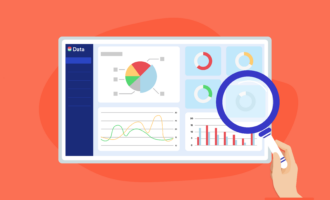As more companies move critical information into digital formats, big data management has become crucial. It builds on the broader foundation of what is data management, which focuses on organizing and maintaining data effectively across systems.
Big data comes from multiple sources, and that stream of data is too large to be processed and digested using traditional methods. Instead, this data needs to be stored and analyzed by a dedicated system.
That’s where big data management comes into play. Here’s a look at how it can further your organization’s goals.
What is big data management?
Big data was first introduced by Doug Laney, an industry analyst. He proposed that big data consists of three elements — volume, velocity, and variety:
- Volume refers to the sheer amount of data that’s traditionally stored across different platforms.
- Velocity describes the speed at which modern data needs to be processed and stored.
- Variety helps us understand the many formats of big data, including numbers, visual media, and audio.
Big data management refers to how someone parses through the volume, velocity, and variety of data on their platforms. The first aspect of big data management is an organization, which enables data to be easily accessible now and in the future.
Because many organizations anticipate an increasing reliance on big data for mission-critical operations, it’s important that this information is stored correctly. Big data management helps companies determine how to sort through all their data, especially what needs to be kept secure and helps them decide how and when data should be discarded. Data that are kept can be analyzed to offer deeper insight into operations.
Big data management for the modern age
Things have changed since Laney developed his model. Today, data scientists are proposing a management model that involves even more Vs — veracity, variability, visualization, and value, says the University of Wisconsin Data Science department:
- Veracity and variability are important measures because they draw attention to the quality and context of data, respectively.
- Visualization is key for helping make complex data understandable to an ordinary audience.
- Value highlights the fact that data is extremely valuable when used to power decision-making.
If your organization wants to leverage big data in your operations, it’s crucial to understand how to manage it and use it for good.
The most important benefit of big data management is that it makes large, complex amounts of information digestible and actionable. When everyone in the organization has access to data points (e.g., your best-selling products or your customers’ preferences), it’s much easier to create cohesive marketing, product, and sales plans that work together seamlessly.
Take the example of Tropical Smoothie Cafe. As Data Flair points out, the health food shop deployed new vegetable-based smoothies in all their locations, then tracked which ones sold the best and which customers asked for which smoothie. This allowed the company to transform large amounts of data into important sales points that powered smart menu decisions.
Strategies for big data management
Big data management helps us parse through the different sources of data, including those made by both humans and computers, says technical writer James Grills.
Human-generated data, created from sources like social media and blogs, is extremely important for companies that want to gain better insight into their customers. In contrast, machine data is information that stems from devices, machines, and computers.
Since large companies have an exponential amount of both human and machine-generated data at their fingertips, big data management strategies should emphasize processing such data. Grills adds that this will “ensure the most appropriate scanning, filtering, and selection of the most meaningful data.”
Having a big data management plan in place enables companies to parse through human and machine-based data to ensure it’s used strategically and effectively to further business goals.
Security is another key factor in this conversation. As cyber threats continue to rise, there’s more at risk when it comes to data. Fortunately, keeping big data organized ensures both the safety and security of data across all fronts. Whether it’s setting up a firewall, securing devices, or opting for multifactor authentication, proactive approaches to big data management ensure that the data of customers and employees remains safe.
Any organization that works in the digital realm will eventually amass large amounts of data. This data can seem messy and confusing by itself. Yet through big data management, companies can effectively organize, process, and analyze their data to perfect their products and optimize their services.










Send Comment: